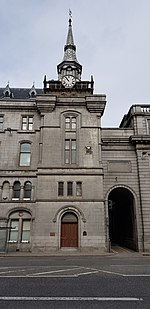2009 European Curling Championships
2009 in European sport2009 in Scottish sport2009 in curling21st century in AberdeenEuropean Curling Championships ... and 2 more
International curling competitions hosted by ScotlandSports competitions in Aberdeen
The 2009 Le Gruyère European Curling Championships were held in Aberdeen, Scotland from 4 to 12 December 2009. The A-Group tournament took place at the Linx Ice Arena, and the B-Group are playing at Curl Aberdeen. A total of 51 teams from 30 European countries were competing.
Excerpt from the Wikipedia article 2009 European Curling Championships (License: CC BY-SA 3.0, Authors).2009 European Curling Championships
Union Street, Aberdeen City City Centre
Geographical coordinates (GPS) Address Nearby Places Show on map
Geographical coordinates (GPS)
| Latitude | Longitude |
|---|---|
| N 57.1475 ° | E -2.0952777777778 ° |
Address
British Heart Foundation
Union Street 31
AB11 5BP Aberdeen City, City Centre
Scotland, United Kingdom
Open on Google Maps









